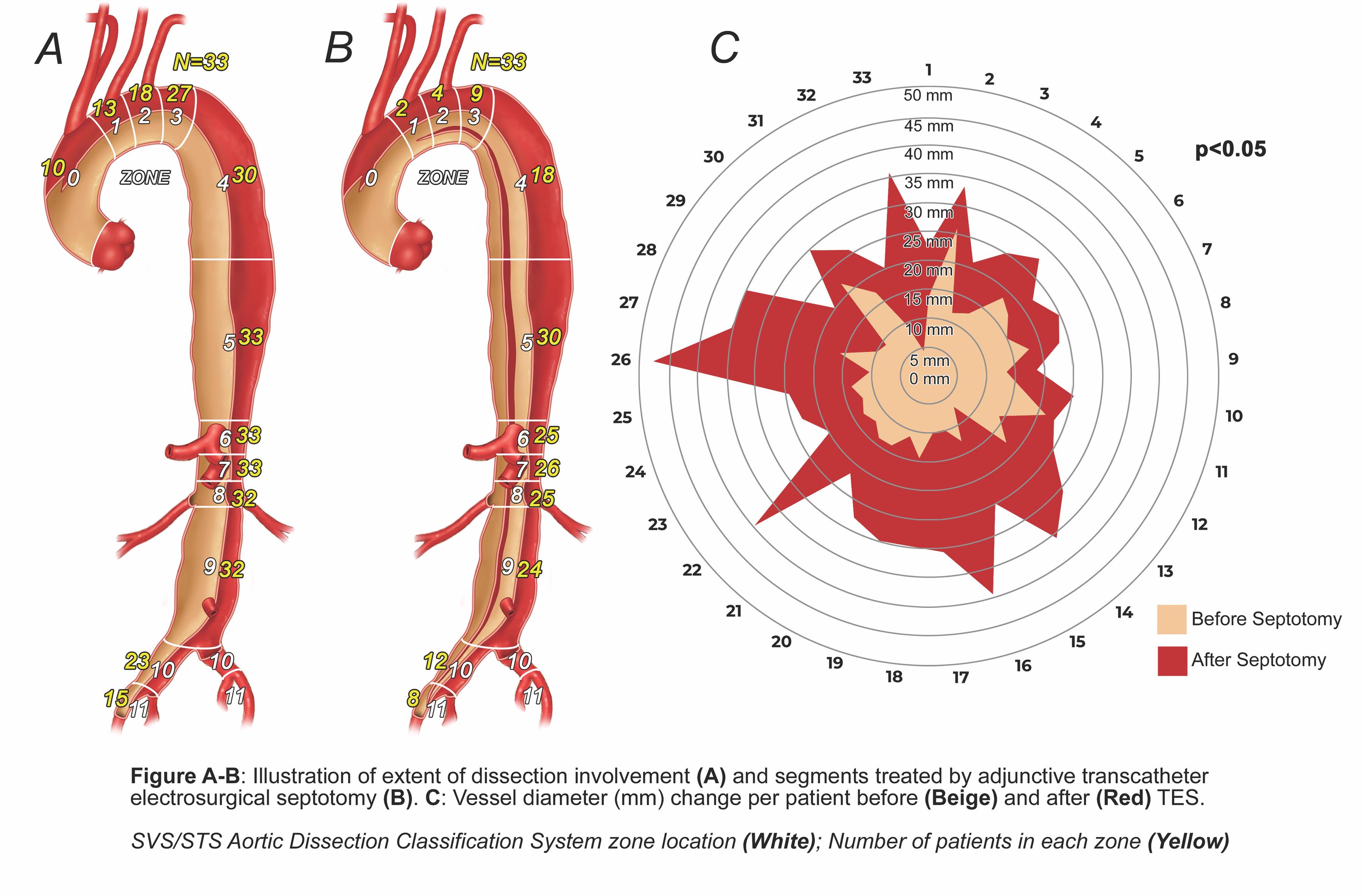OBJECTIVES: Endovascular repair of chronic dissecting aortic aneurysms may be challenged by severe true lumen (TL) compression limiting space for catheter manipulations and target vessel incorporation. This study describes the indications, technical success and early outcomes of transcatheter electrosurgical septotomy (TES).
METHODS: We reviewed the clinical data of consecutive patients treated by endovascular repair of aortic dissections (AD) with adjunctive TES in two centers between 2021-2023. End-points were technical success (successful septotomy without dislodgment of lamella or target vessel occlusion), 30-day mortality and major adverse events (MAEs). RESULTS: There were 197 patients treated for ADs with endovascular repair. Of these, 33 patients (63±13 years-old; 85% males) had adjunctive TES. Indications were severe TL compression (<16mm) in 24 patients (73%), target vessel origin from FL in 23(70%), creation of suitable landing zone in 11(33%), and organ malperfusion in two (6%). Endovascular repair included FBEVAR in 17 patients (52%), TEVAR/EVAR in 11(33%) and arch-branch repair in 8(24%). Dissections extended into Zones 5-7 in all patients and TES was performed across the mesenteric-renal aortic segment in 25(76%) (Figure). Technical success was 94% (31/33) with two failures due to inadvertent SMA dissection or lamella dislodgement leading to renal artery occlusion in one patient each. There were no arterial disruptions. Aortic lumen diameter in the unified TL increased from 13.8±4.5mm to 27.9±6.9mm (P<.05). All patients treated by FB-EVAR had successful incorporation of 69 targeted vessels. There were no endoleaks associated with newly created landing zones. Three (9%) patients had MAEs including major stroke, new-onset dialysis, and respiratory failure in one patient each. One (3%) patient died from major stroke. During a median follow-up of 4 months (IQR 1-7), there were no complications secondary to TES and one patient (3%) died from non-aortic-related causes. CONCLUSIONS: Transcatheter electrosurgical septotomy is a safe and effective adjunctive technique that can allow creation of suitable landing zones across dissected segments and enlarge aortic luminal diameter in patients with severe true lumen compression. The risk of target vessel loss was low (3%) with no arterial disruption. Increasing experience is needed to better define applications relative to standard endovascular techniques. 